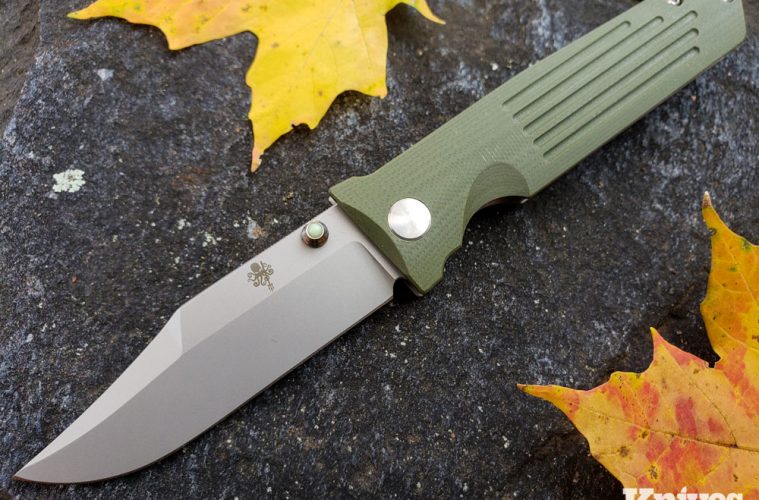PROMETHEUS DESIGN WERX TERRAVANTIUM STS-AT: A RUST-PROOF EDC FOLDER
I first learned about Prometheus Design Werx around 2016. The company caught my eye, and I noticed it understood the spirit of adventure.
A deep dive into the company’s website revealed more than a handful of overland and backcountry trips in varying environments and a flair for the classic designs used by woodsmen and sportsmen brought up to date with modern materials and manufacturing.
“The STS-AT design is very much inspired by the chute knife, but a contemporary folder which makes for a practical daily carry…”
A company like Prometheus Design Werx doesn’t mess around with the gear it carries and, for full disclosure, as a sponsored brand representative, I will say its gear holds up in all of my own travels and adventures.
I’m fortunate to be one of its writers blogging about my adventures and general bushcraft and outdoors skills on its affiliate site, Danger Ranger Bear.
Simply put, adventure and exploring run deep in this company on all levels.
FOLDING CHUTE KNIFE
I’ve had the good fortune to use Prometheus Design Werx equipment on the water and underneath it as a boater and diver. I’ve taken its gear to the arctic on fishing trips as well as to the tropics while hiking in the rainforest.
I have a great relationship with the company and give feedback on products as my experience with them grows.
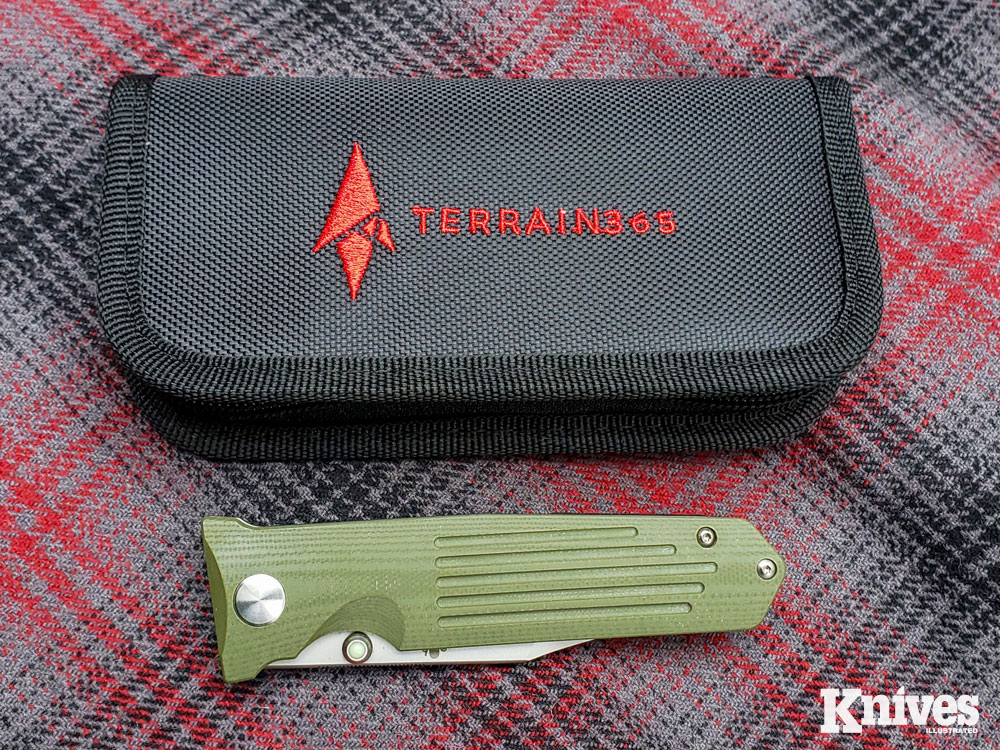
The STS-AT comes with a padded case for storage when not in use.
Well, recently PDW paired with the knife company Terrain 365 to produce something I want for future adventures but was only given a temporary loaner for now.
The PDW Limited Edition of the Terrain 365 STS-AT knife is truly a combination of old-school cool with modern technology and manufacturing.
The chute knife design by Bob Loveless, Harry Archer, and Ken Warner is a classic knife from the latter half of the 20th century. The knife was originally meant to be carried by pilots for overt or covert military/government operations.
The original knives command a hefty price tag and there are many fixed blade versions available from modern makers paying tribute to the originals. Prometheus Design Werx is a company that embraces tradition and practicality.
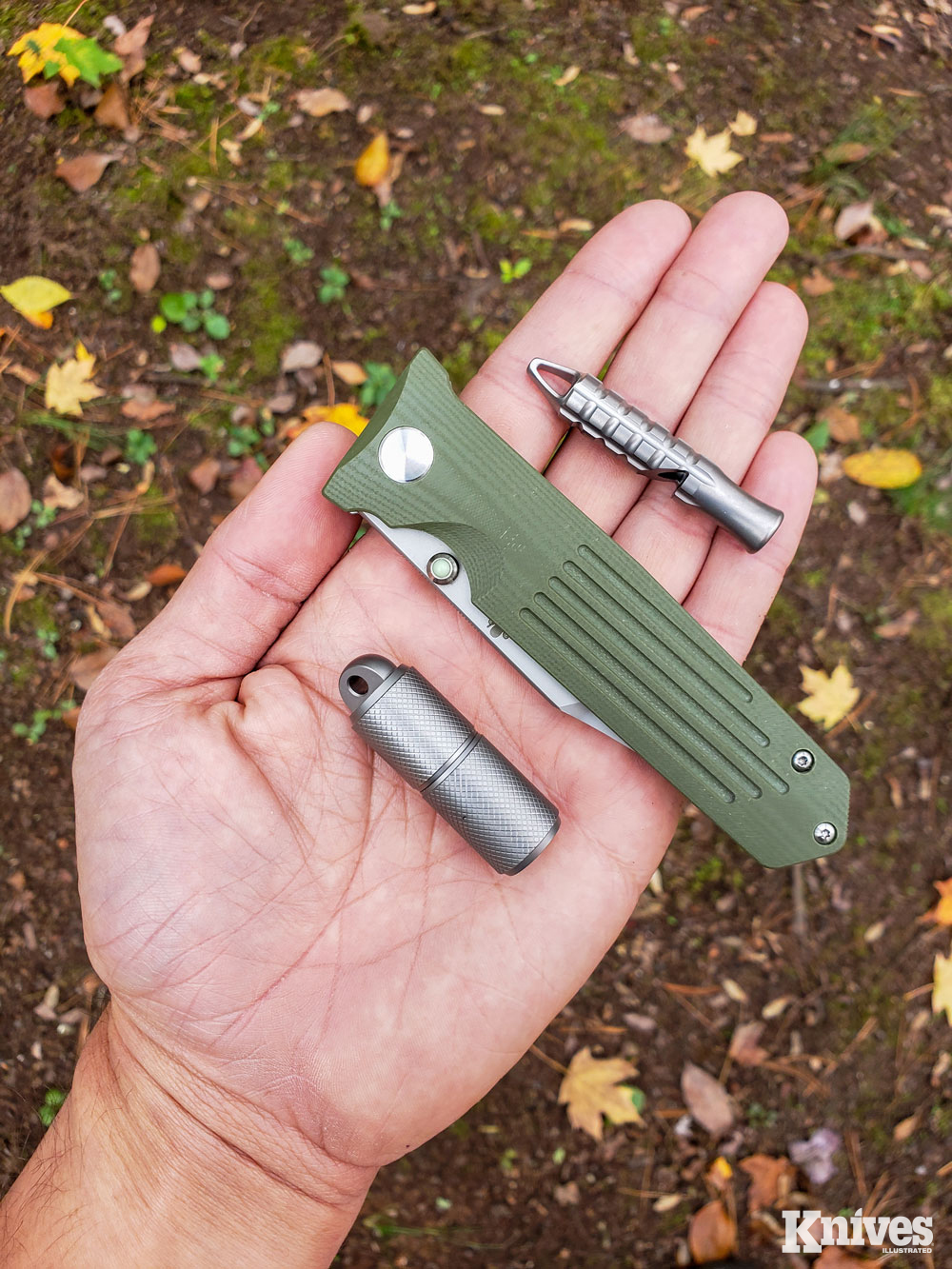
Prometheus Design Werx is known for titanium accessories including compasses, whistles, and lighters. The STS-AT pairs perfectly with Prometheus Design Werx EDC items.
“The STS-AT design is very much inspired by the chute knife, but a contemporary folder which makes for a practical daily carry, and of course utilizing a new nonferrous alloy for the blade to expand its capabilities in various environments,” said PDW owner Patrick York Ma. “It is a design which really takes from the past, present, and also future.”
The standard chute knife design dictates a blade upwards of 5.5 inches, which can be too large for most to carry on a daily basis.
The solution was to create a pocket version of a knife that retained the swedge (unsharpened) and classic lines of the original. I wondered if a scaled-down version of the chute knife could perform necessary daily and outdoors tasks and be equally admirable.
INCREDIBLE MATERIALS
Perhaps the most intriguing part of the design of the STS-AT knife is the materials used in the construction. Prometheus Design Werx is known for its use of titanium in everyday carry items including compass housings, whistles, and peanut lighters.
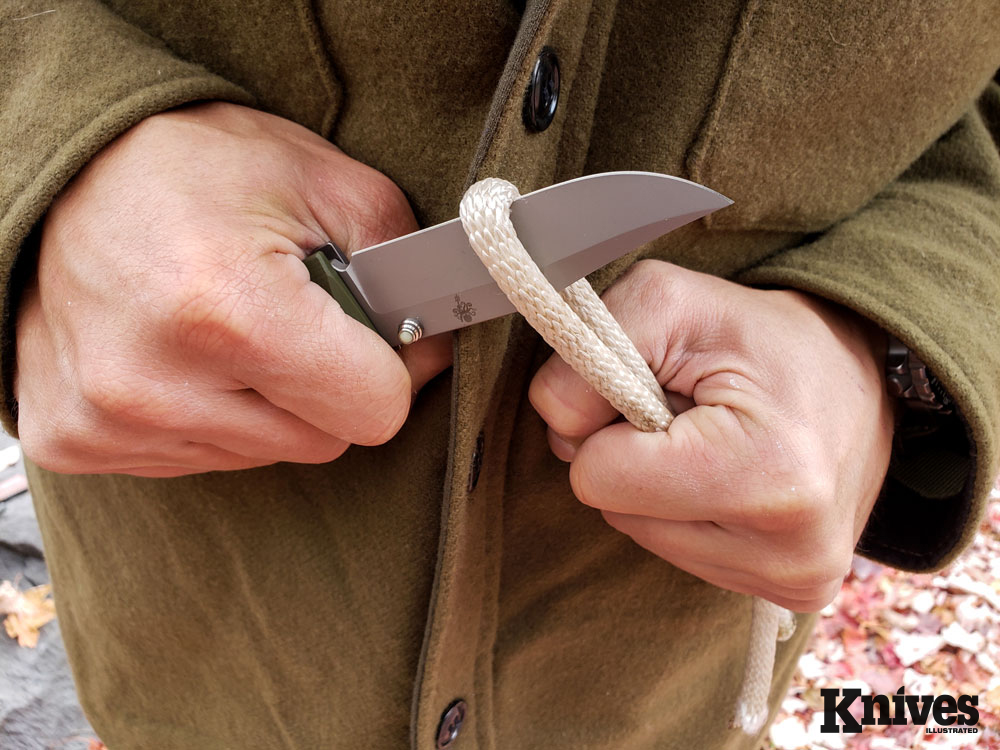
The STS-AT cuts cordage easily much like the original Loveless chute knife.
SPECS
PDW Limited Edition Terrain 365 STS-AT
Overall Length: 8.1 inches
Blade Length: 3.5 inches
Thickness of Blade: 0.150 inch
Blade Material: Terravantium
Handle Material: G10 and 6AL-4V Titanium
Weight: 3.8 ounces
Price: $375
The STS-AT folder features a handle with a 6AL-4V titanium slab on one side and an olive drab handle on the other. The olive drab color scheme is a great subtle homage to the chute knife’s military roots.
The handle has small fullers milled into the sides that provide a secure grip and a little extra flair.
“Terravantium dendritic cobalt is a non-magnetic and non-ferrous alloy. It will not rust, it will not corrode, and it will not pit.”
The more I examined the knife inside and out, the more attention to detail I found. The dual thumb studs glow in the dark and help with opening the knife with the ring finger or thumb.
The knife opens and closes incredibly smoothly, and one may say it feels “like glass.” That’s close, but the knife’s action is actually riding on ceramic bearings.
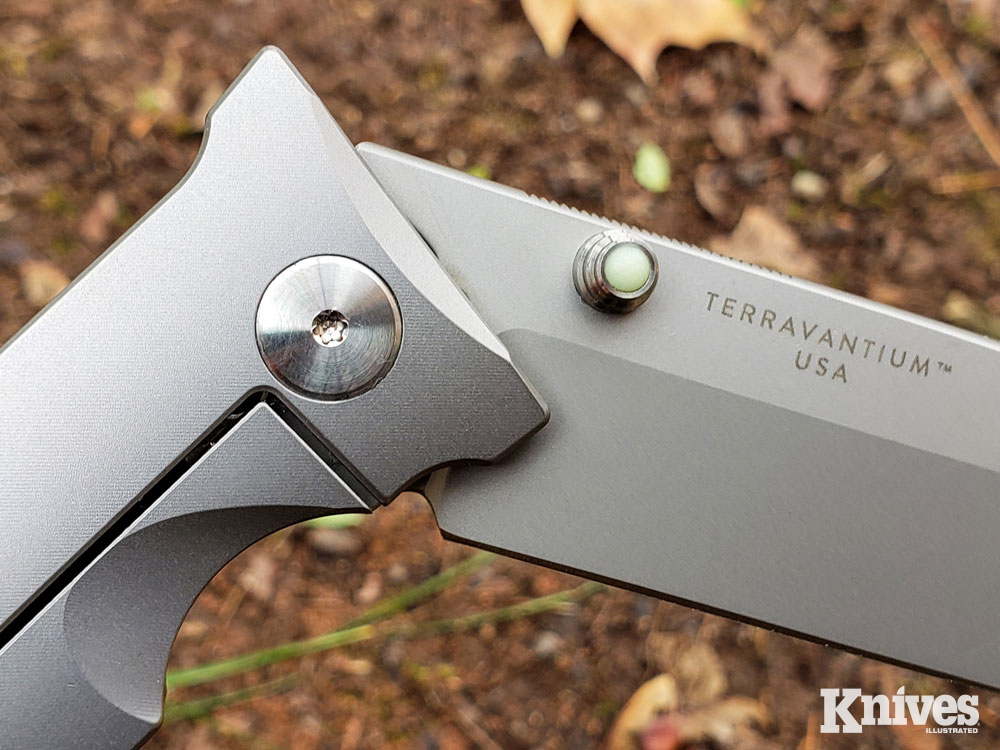
Features such as a titanium pivot pin and glow-in-the-dark thumb stud set the STS-AT apart from other folders.
Of course, the real star of the design materials is the Terravantium dendritic cobalt blade. If you’ve never heard of the material, which we should tell you is not “steel,” pay close attention. Terravantium dendritic cobalt is a non-magnetic and non-ferrous alloy.
It will not rust, it will not corrode, and it will not pit. It could potentially be a dream material for a knife that could be carried into wet weather and extreme conditions that would destroy other blades.
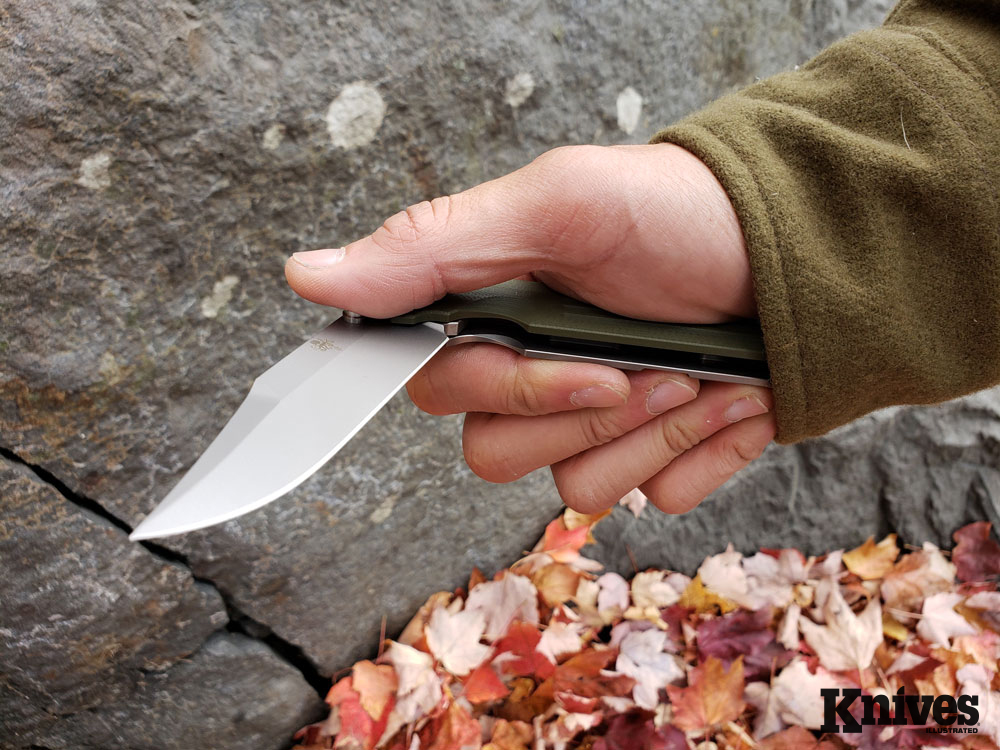
The PDW STS-AT opens easily and smoothly with an ambidextrous thumb stud.
The more I researched this material, the more I realized how incredible these claims are. In other words, I stopped before I read about the “microscopic, highly aggressive saw blade” formed by the carbides and needless to say, they had me at “will never rust, corrode, pit, or stain.” I got right to testing.
FIELD TEST
When it comes to field testing a folder, the best way is to call upon it daily as part of your everyday carry. When this loaner showed up, it immediately found a place in my pocket and was carried for weeks on end and used all hours of the day and for any task that came up.
The weather in New England was changing from moderate temperature autumn to snowy winter very quickly. I also used the knife on a few trips to the great outdoors where the knife was used in your typical camp fashion. It saw plenty of use and different testers.
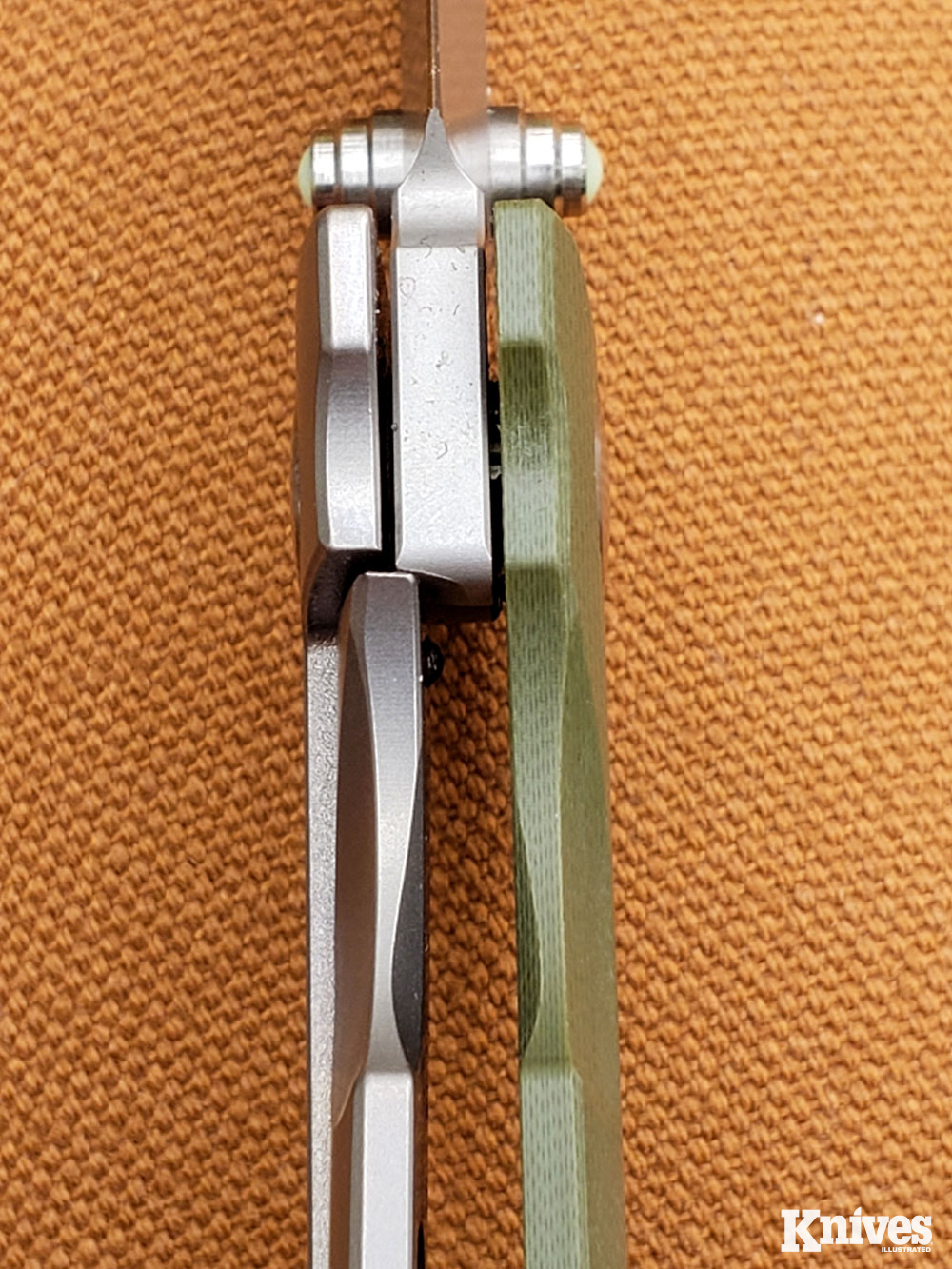
The titanium frame lock proved strong and reliable.
One of the first things I noticed with this knife is the manner in which the clip makes it ride in the pocket. On one hand, deep pocket carry is excellent to keep the knife secured in the pocket.
On the other hand, deep pocket carry means having to reach slightly, and I mean slightly, deeper into the pocket to access the blade.
At first, I didn’t notice the internal lanyard pin at the tail end of the knife, but once I did, I added a small blaze orange paracord lanyard that made it easy to draw the knife and find it if I dropped it or put it down in the brush.
“We learn from the past, look to the future, and build for today.” — Prometheus Design Werx Mission Statement
It took a while to get the opening of the knife down with the correct pressure and direction of force. Some of our testers initially had trouble opening the knife, but after describing how to hold the knife and apply pressure with the side of the thumb, there was no issue.
In fact, I found there were multiple ways to open the knife easily depending on the level of stress, speed, or loss of dexterity. One of the easiest ways I opened the knife was with the tip up and using the ring finger along with a snap of the wrist.
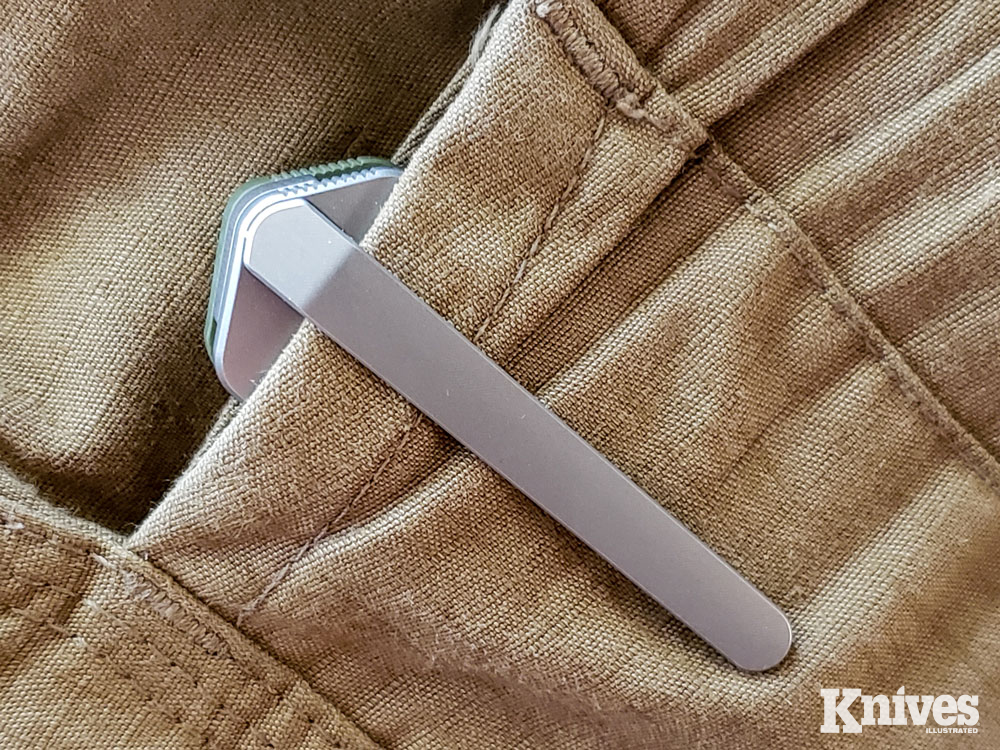
Pocket carry is deep with a clip that closely hugs the fabric.
In hand, the knife has a substantial feel, but it isn’t a boat anchor. In terms of lock up and play, the frame slides perfectly in place and the blade has no lateral wiggle. The frame lock slips into place positively.
The STS-AT handle feels great and the slim clip doesn’t affect the grip. I assessed the STS-AT’s ability to cut rope and parachute cord, the intended purpose of the original chute knife. No cordage posed any issue.
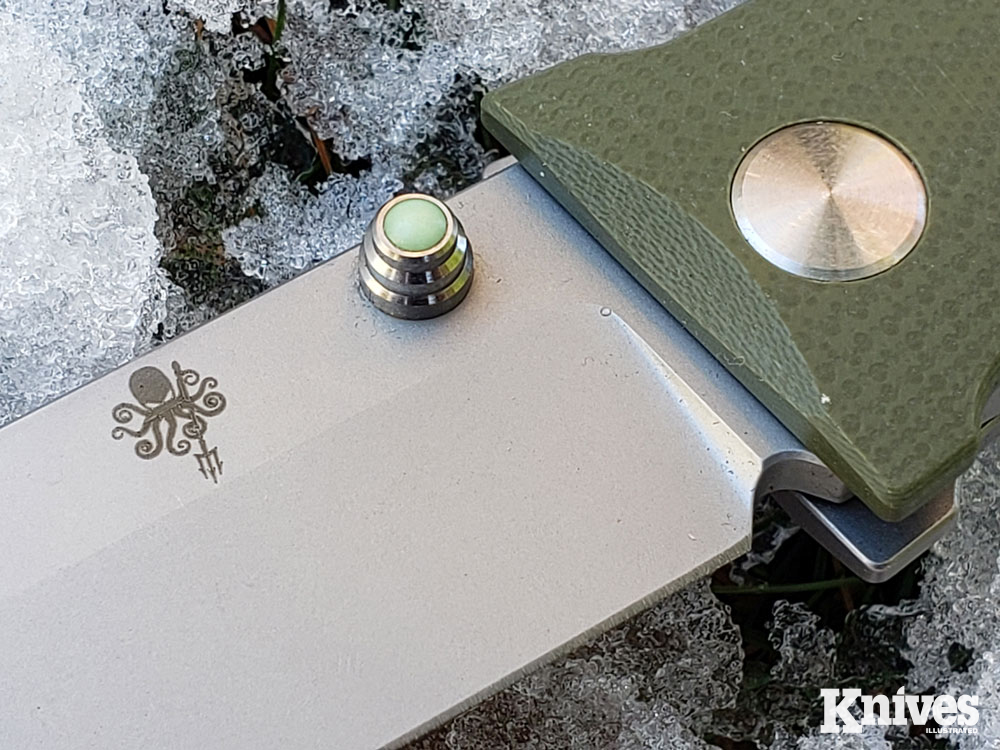
The STS-AT wears the Prometheus Design Werx “Kraken” logo of its special projects division.
In a more choked up grip, the ever-so-slight top guard really doesn’t get in the way, and the rounded edges of the blade and jimping are nice touches for using the folder in saber grip while carving.
I carved a whole host of trap triggers and various spearheads that could be used by a “downed pilot” in the spirit of the original chute knife. The belly of the blade worked great for getting inside the radius of my notches and it whittled cleanly.
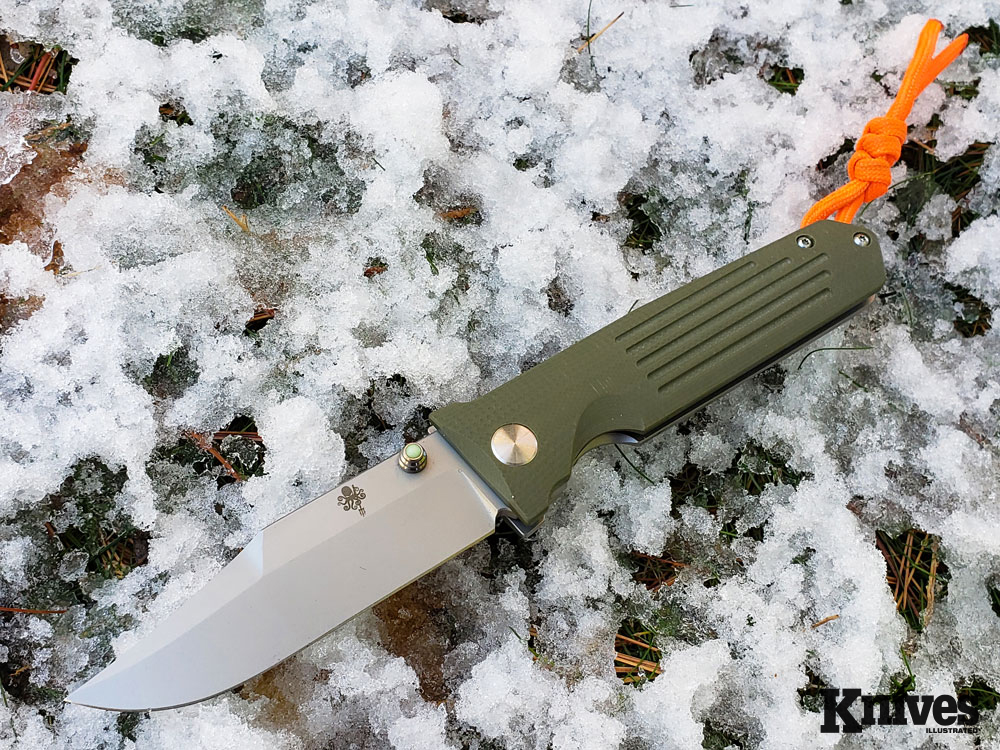
The STS-AT blade, made from Terravantium, will not rust or corrode. It’s ideal for wet weather carry. The author added a blaze orange paracord lanyard to help make retrieving the STS-AT easier. This lanyard came in handy for locating the knife when it was put down a couple times.
During the course of my field test, there was a period of heavy rain, snow, and some interesting temperature swings. I left the knife out in the backyard to let Mother Nature do her bidding.
All the muck this knife was subjected to had no effect on the blade. At first, I thought there was an issue with rust around the pivot pin, but it was just some minor grit it picked up either in my pocket, from the steaks I cut, or grit from good old-fashioned use.
This knife simply will not rust. Everything on this knife is non-magnetic and rust resistant down to the titanium screws. I gave the knife a pass over with a strong magnet and there was no attraction.
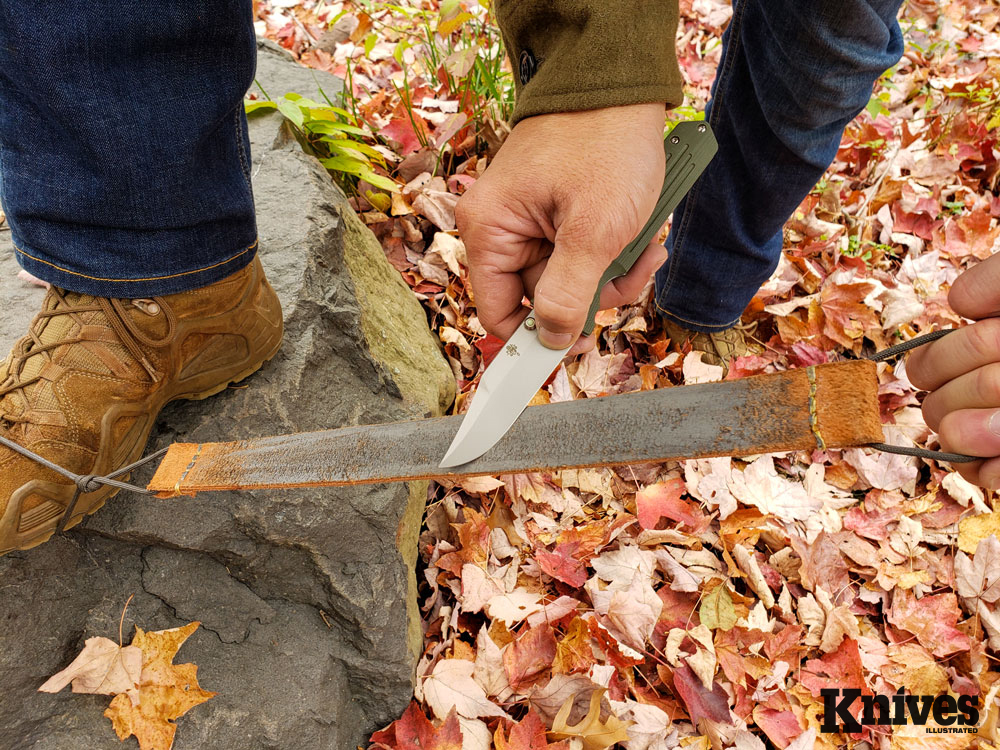
A leather strop with compound was used to keep the edge in working order during the author’s field-testing phase
One bit of advice: No matter how saltwater resistant your folding knife is, you should always wash it out with fresh water to clean out any residual salt. This is to prevent salt granules from making the opening and closing action rough.
I gave the STS-AT a good rinse with the garden hose and blew out the water with an air compressor. The knife was back to smooth-as-glass opening and closing when I was done.
When it came to touching up the edge, I didn’t want to do anything that ran counter to what I read about the blade. Normally, my standard sharpening and honing regimen includes finishing the edge to a mirror with a polishing compound.
Instead, I just used an 800-grit diamond stone and black compound on my honing strop for a “toothier” edge.
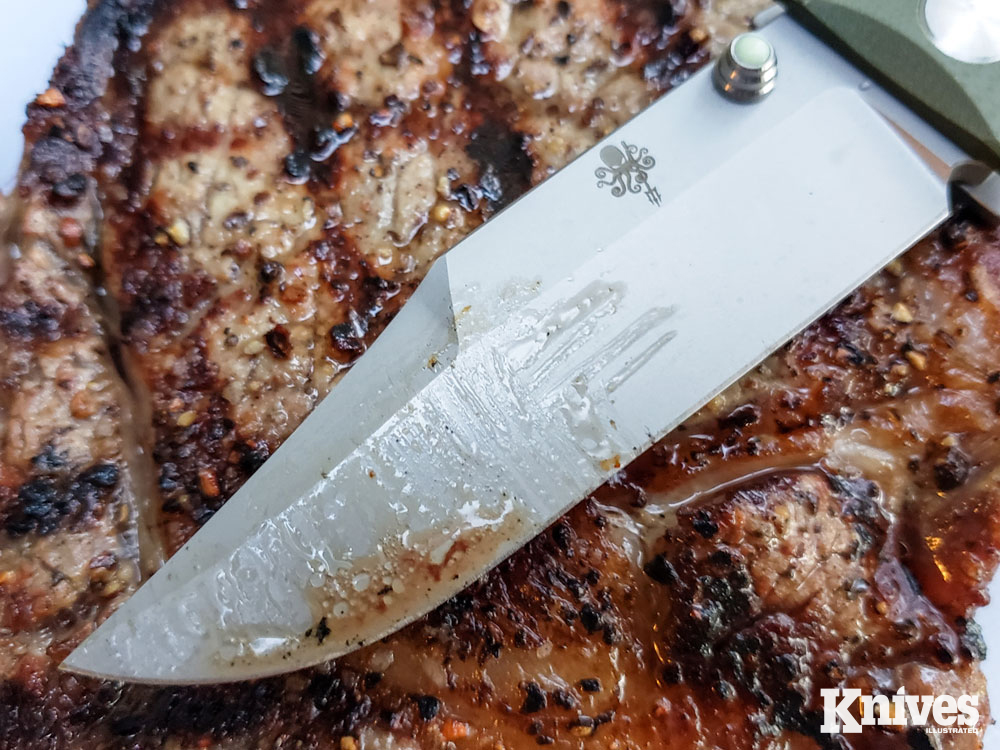
Regardless of what gets on the Terravantium blade from food prep, you know it won’t affect the blade.
Granted, the knife didn’t see heavy cutting over an extremely extended period of time, but it did see use, including plenty of exposure to acidic food in my kitchen and no shortage of breaking down cardboard boxes and cutting branches out of the way near some of my favorite bow-hunting spots.
Sharpening was not difficult as it is with some of the super steels out there. Moderate pressure on a diamond stone was the key to keeping this knife just as sharp as it was when it was received.
I WANT ONE
Perhaps the only criticism I can predict users making is the lack of reversible pocket clip. Since 9/10 of the population is right-handed, I don’t anticipate this becoming a major issue or actual dealbreaker.
The final verdict is that I want one and it really was difficult parting with this sample on the way back to the manufacturer.
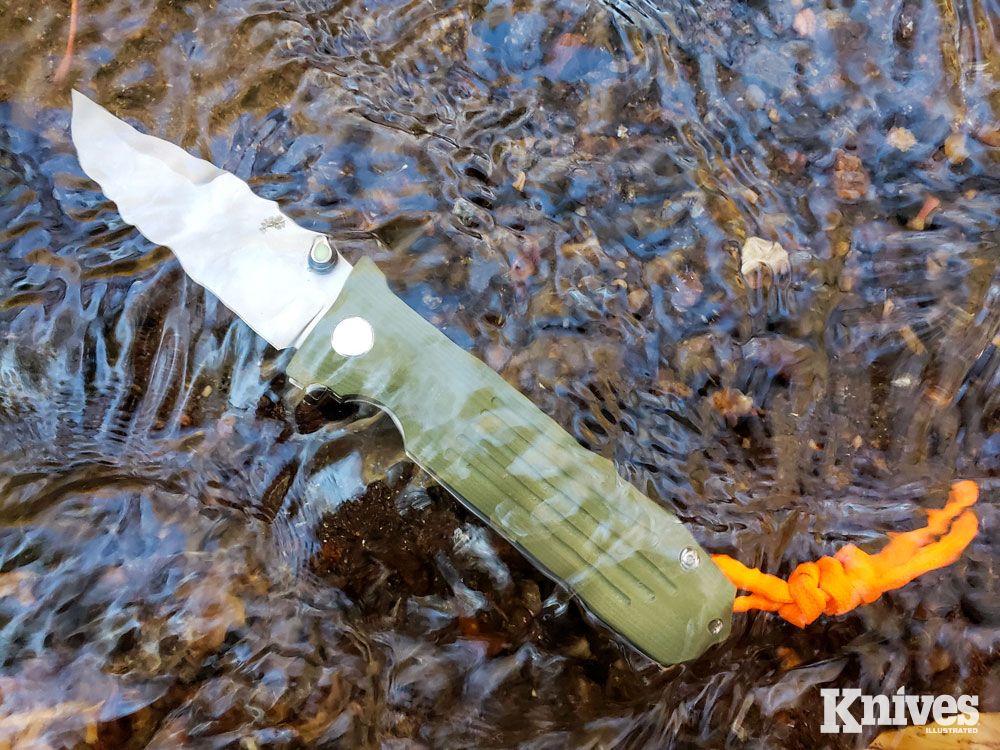
The construction of the STS-AT allows it to tolerate conditions that would destroy most other folding knives.
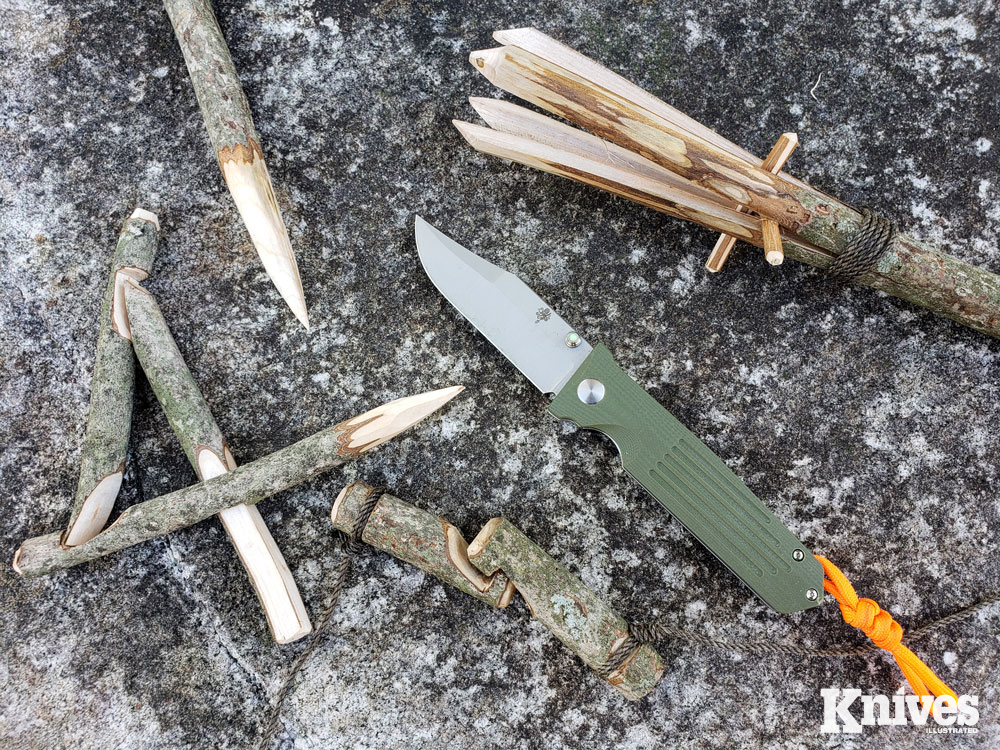
The author used the PDW STS-AT to create wooden tools that could be used in a survival situation for protection or food.
As a professional knife guy, it’s usually easy to move from one knife review to the next, but this is a knife I want in my stable. If you’re like me, you may find yourself in a situation where your gear ends up wet for days while out on a remote trail in the tropics.
I love the maintenance-free aspect of this knife and knowing the blade will be good to go whenever I reach for it. I’ll use the hell out of it and take it on any adventure to the great outdoors or just around the block in my personal EDC.
SOURCE
Prometheus Design Werx
Prometheus
DesignWerx.com
PROMETHEUS DESIGN WERX CEO, LEAD DESIGNER, AND FOUNDER PATRICK YORK MA
Patrick York Ma is the Prometheus Design Werx front man. With a long history in designing products, Patrick is careful not to bring goods to market unless he tests them thoroughly.
Raised in the mountains of Pennsylvania where weather conditions change quickly, his upbringing exploring the outdoors helped carve the path for his company.
Ma is a modern-day renaissance man with passions in vintage motorcycles, wildlife conservation, exploring the great outdoors, and great knives, of course.
“Being a true nomad in the backcountry means that you are well versed and prepared for any condition, weather, and environment,” Ma said. “I want to create products that are as versatile and capable as the people that use them and support their outdoor lifestyle.”
This translated into using natural materials such as wool used for thousands of years as a standalone fabric or paired with modern synthetics for the best solution.
Patrick’s work has helped build a loyal following with outdoorsmen around the globe, members of the military, and with the occasional adventurer (dare we say “weekend warriors”) who simply appreciates the quality of construction of the gear they purchase.
PDW constantly is looking to improve the performance of equipment and draws on the collective experience of industry peers, trusted “insiders” (or is it “outsiders”), professionals in the civilian and military, and classic industrial design influences from Dieter Rams.
Patrick continues to expand the reach of his company and push the envelope of the gear and apparel it produces.
Prometheus Design Werx and the leadership of Ma can be best summed up by a snippet from their mission statement: “We learn from the past, look to the future, and build for today.”

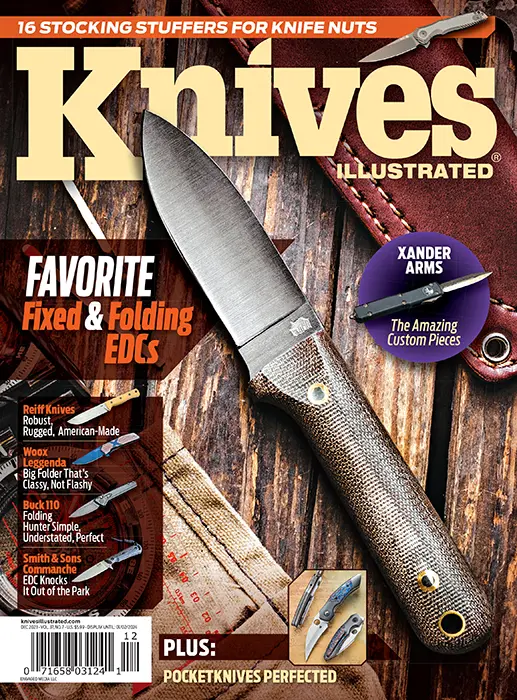 Subscribe / Back Issues
Subscribe / Back Issues